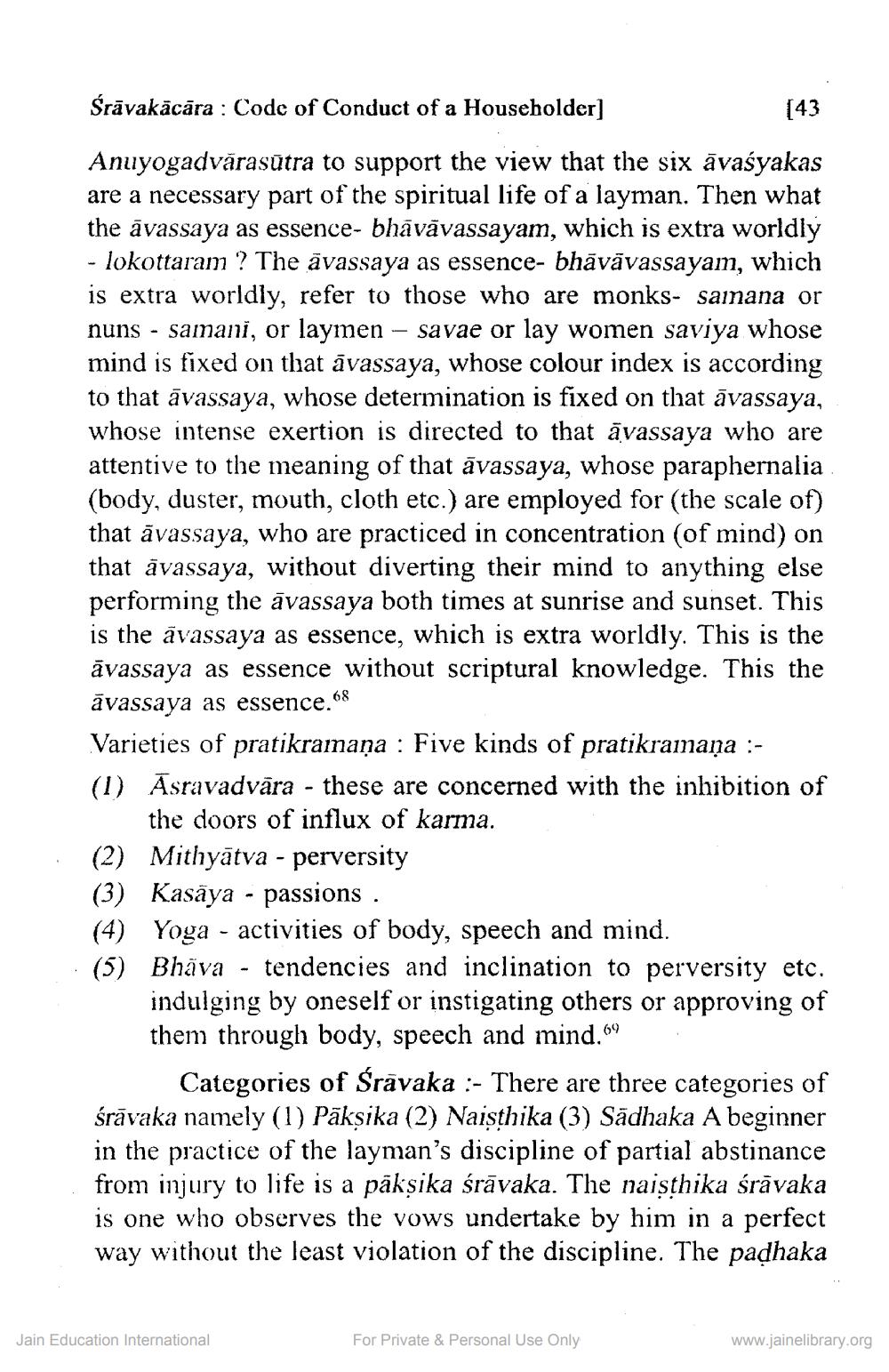________________
Śrāvakācāra : Code of Conduct of a Householder]
[43
Anuyogadvărasūtra to support the view that the six avasyakas are a necessary part of the spiritual life of a layman. Then what the āvassaya as essence- bhāvāvassayam, which is extra worldly - lokottaram ? The āvassaya as essence- bhāvāvassayam, which is extra worldly, refer to those who are monks- samana or nuns - samani, or laymen – savae or lay women saviya whose mind is fixed on that āvassaya, whose colour index is according to that āvassaya, whose determination is fixed on that āvassaya, whose intense exertion is directed to that āvassaya who are attentive to the meaning of that āvassaya, whose paraphernalia (body, duster, mouth, cloth etc.) are employed for (the scale of) that āvassaya, who are practiced in concentration (of mind) on that āvassaya, without diverting their mind to anything else performing the āvassaya both times at sunrise and sunset. This is the avassaya as essence, which is extra worldly. This is the āvassaya as essence without scriptural knowledge. This the āvassaya as essen Varieties of pratikramaņa : Five kinds of pratikramaņa :(1) Asravadvāra - these are concerned with the inhibition of
the doors of influx of karma. (2) Mithyātva - perversity (3) Kasāya - passions . (4) Yoga - activities of body, speech and mind. (5) Bhäva - tendencies and inclination to perversity etc.
indulging by oneself or instigating others or approving of them through body, speech and mind.69
Categories of Śrāvaka :- There are three categories of śrāvaka namely (1) Pākṣika (2) Naisthika (3) Sadhaka A beginner in the practice of the layman's discipline of partial abstinance from injury to life is a pāksika śrāvaka. The naisthika śrāvaka is one who observes the vows undertake by him in a perfect way without the least violation of the discipline. The padhaka
Jain Education International
For Private & Personal Use Only
www.jainelibrary.org




